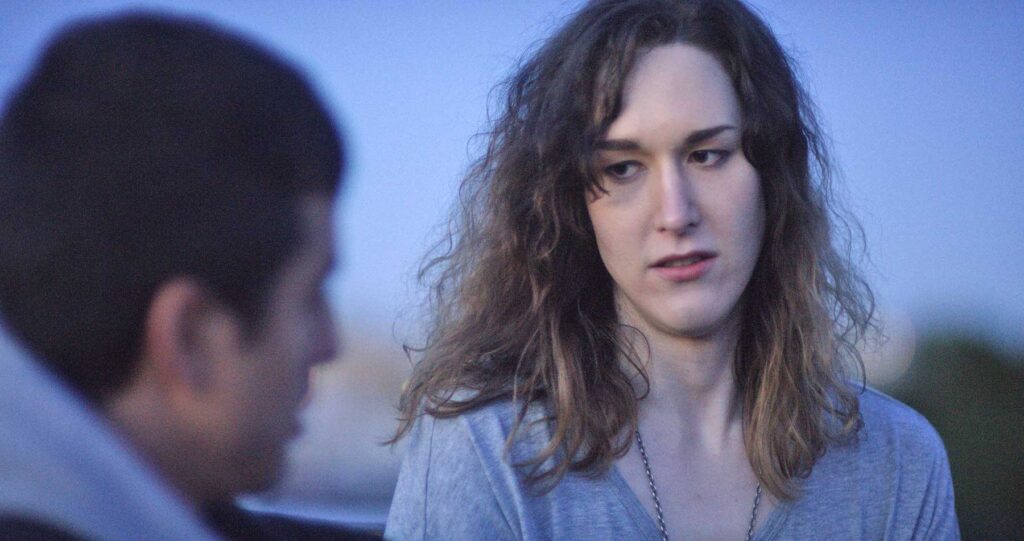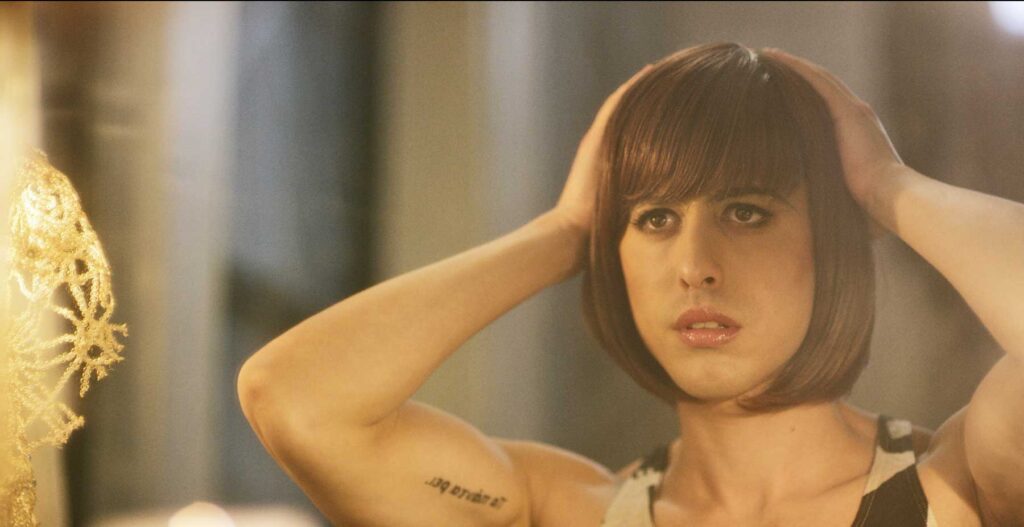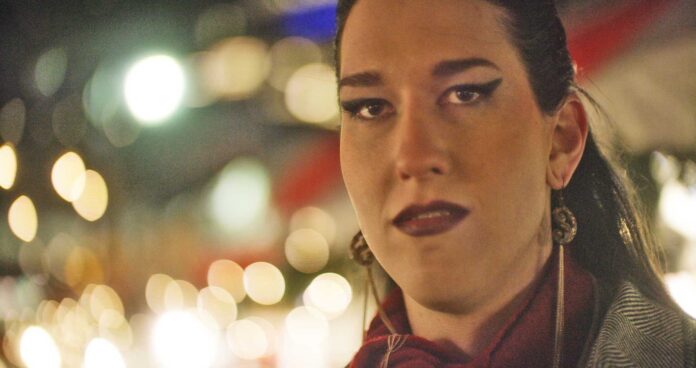After years of collaborating on short films around the East coast, filmmakers André Phillips and Charles Vuolo shared a gut feeling: they were both ready to make a feature-length production. But they weren’t sure what to make it about.
Then, they met trans artist Celia Harrison on the set of a music video in which she was performing in 2014. Still weighing a subject themselves, they asked her what kind of story she’d most like to see onscreen.
“I’d love to see a film with a transgender protagonist that’s a badass,” she told them at the time. Specifically, a trans character who wasn’t framed as a victim. Or, at the very least, one that wasn’t sad all the time.

And now, in their new film “Lupe,” which is streaming on HBO Max and HBO Latino, the creators are finally presenting a figure just as tough and fearless as they’d imagined.
Working with Harrison on the script (she also fills a key supporting role), they created a character for whom strength is a key component, embodied in the historically male-gendered practice of boxing: someone unafraid to traverse New York streets even in the dark — and who, while flawed, could serve as the hero of their own story.
Over the film’s trajectory, Lupe (Puerto Rican actor Rafael Albarrán), a recent Cuban immigrant, searches for their missing sister Isabel (Lucerys Medina) while navigating both the world of low-budget sex work in New York and their own gender identity in the process. Featuring frank, sometimes harsh discussions of transgender and immigrant life punctuated with bursts of violence, the film presses on ideas of gender by forcing its character to navigate the spaces of boxing and sex work both: two spheres often seen as male and female worlds.
“One of the most beautiful things in the film is that we’re constantly going from masculine to feminine, and we see that some people are trapped in their masculinity and some people are trapped in their femininity,” says Albarrán, who identifies as non-binary and uses he/she/they pronouns. “At the end of the day all these constructs are just traps. And it’s really beautiful for the character of Lupe to really empower herself and look for what is authentic to her.”
Preparing for the role — which involved whirlwind days rushing from Muay Thai training to fitting sessions for women’s clothes before an initial two-week shoot — helped shape Albarrán’s own trajectory as much as Lupe’s.
“The more I was reading about the trans experience — the more I was informing myself about gender and femininity — the more I started questioning those things,” Albarrán says. “So that exploration that the character does in the movie: I feel that came really close to me because that was an exploration that I was doing myself.”
For both directors, working with trans collaborators and creating an atmosphere that welcomed improvisation and exploration proved key in building out the film’s emotional world. The main goal, often, was to stay out of the way of the performances.
“One thing we asked our crew, whoever we would work with: this is a film about humanity, this is about people,” says Vuolo. “As much as I love beautiful dolly shots or beautiful crane shots of buildings, it’s about Rafael, Isabel… It’s about these characters, so get in there and get close. Don’t worry about any of the typical concerns. Just get close, get emotional, let them breathe.”
Working with trans collaborators was key for the directors. Harrison, who collaborated on the film throughout, did more than just fact-check. She took creative risks and often provided ideas that drove entire scenes.
“She was interested in doing things that we would never have done or been bold enough to do,” Vuolo remembers, citing a longer scene in which she appears nude in the bathtub and discusses intimate, personal details recalled from her own experience.
”You’re the one putting yourself out there, you’re the one lying there, you’re the one talking about this stuff. And we’ll film it,” Vuolo recalls telling her. “It sounds incredible and emotional and intense. But we would never have written a scene like that, we wouldn’t have known how.“
In editing, though, the production hit a snag. The loose 47-page shooting script (90-100 is customary for a short feature) that had created such a welcoming set environment left the team struggling to find a structure for the film.

“We had looked at moments and scenes 200 times; we couldn’t make heads or tails of it,” says Vuolo. “We ended up finding a phenomenal editor in Shiran Amir who just brought this thing to life. Not only did she bring the footage and all the wonderful performances that everyone gave us to life, she brought an entire post team.”
That team included Kerry Michelle O’Brien, who was moved to tears by what she saw as a rare, truly rounded trans character in one of Amir’s early cuts — so much so that she came on board as both transgender consultant and executive producer. As an advisor and an editor herself, her main suggestion was often to let scenes play out more fully, even ones that might feel uncomfortable to watch.
“There’s a couple of pivotal scenes in the film where the boys were quite worried about sort of letting it breathe. And me and Shiran were pushing back and going, ‘No no, it needs more — we need to see this.’ Yes, it feels awkward and uncomfortable,” says O’Brien, “but that’s because it’s real. It’s that person’s truth for that moment. So please linger on it more. Because you know, unless you’ve been in that position where you’ve lost everything, everything’s just falling away, you don’t know who you are, where you’re going; you don’t even know who your friends and stuff are or anything, unless you’ve lived that.”
Letting things simply exist onscreen, suggests O’Brien, is often the key not just in getting to the core of a scene, but to the heart of an experience.
“Let it be there, because it speaks to me as a transgender individual,” she says. ”Yes, this point in the film may be quite visceral and hard to watch. But you know why it’s visceral and hard to watch? Because it’s a truth.”
George Elkind is a writer and media critic based in Metro Detroit.

